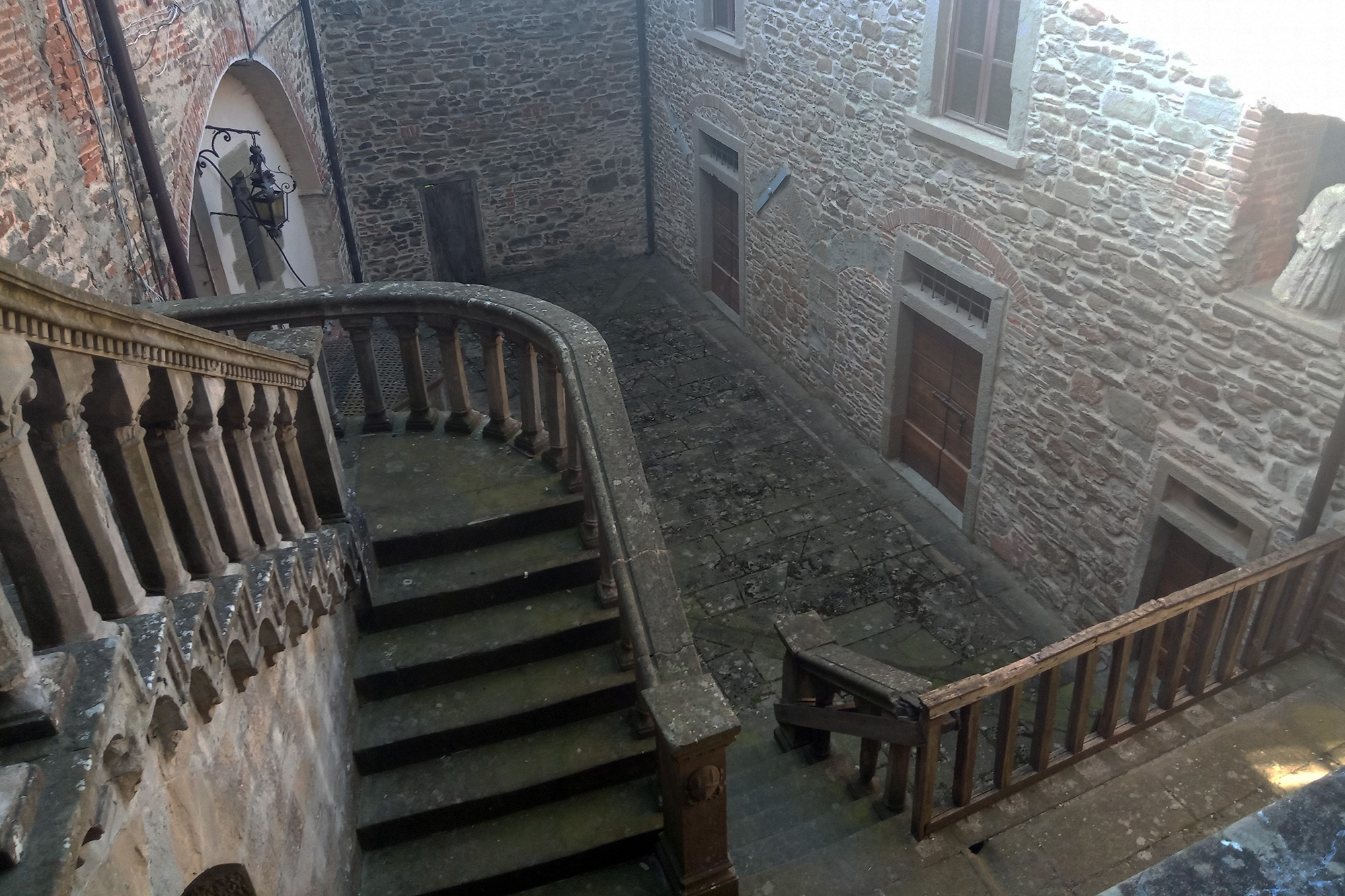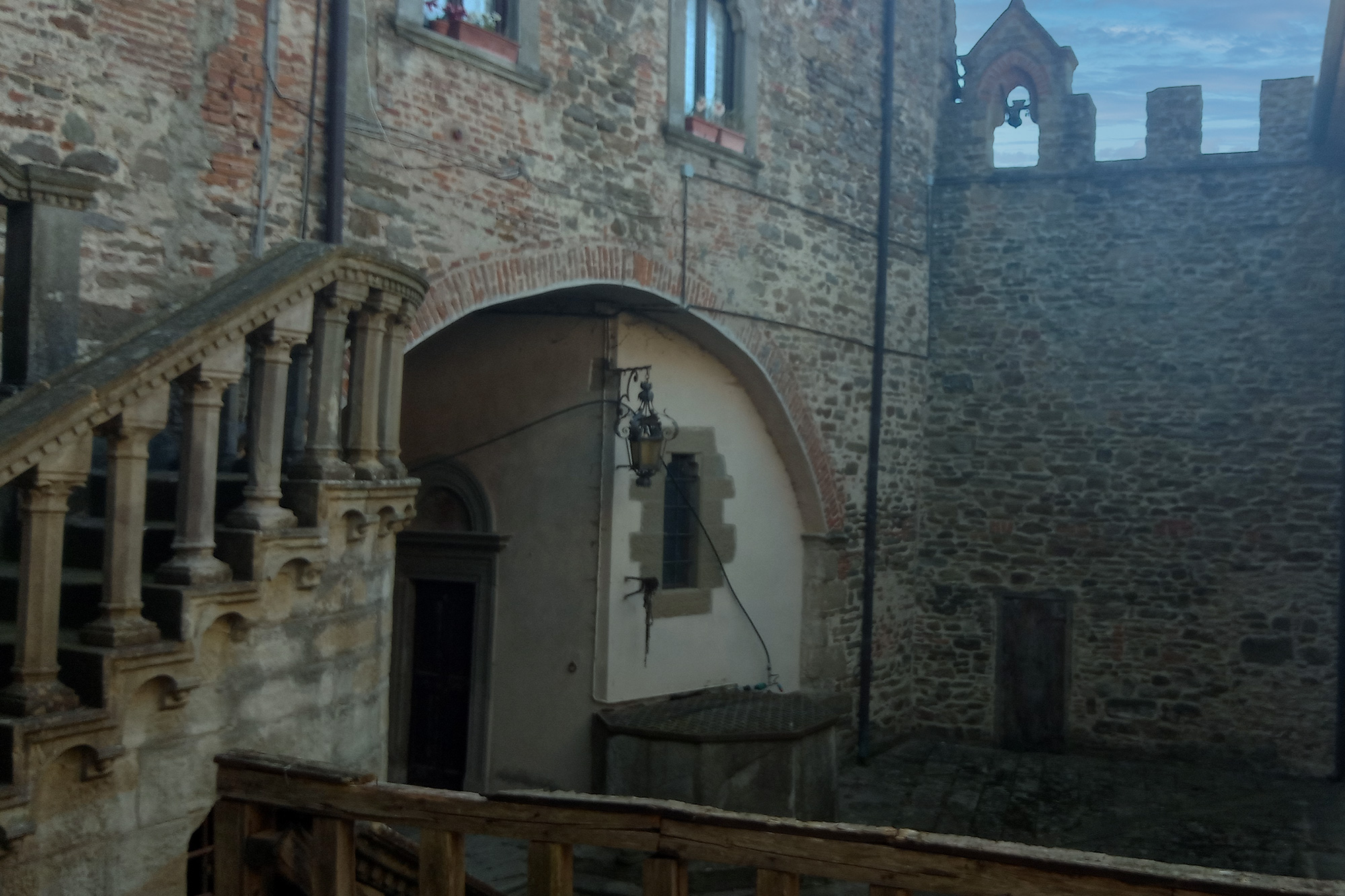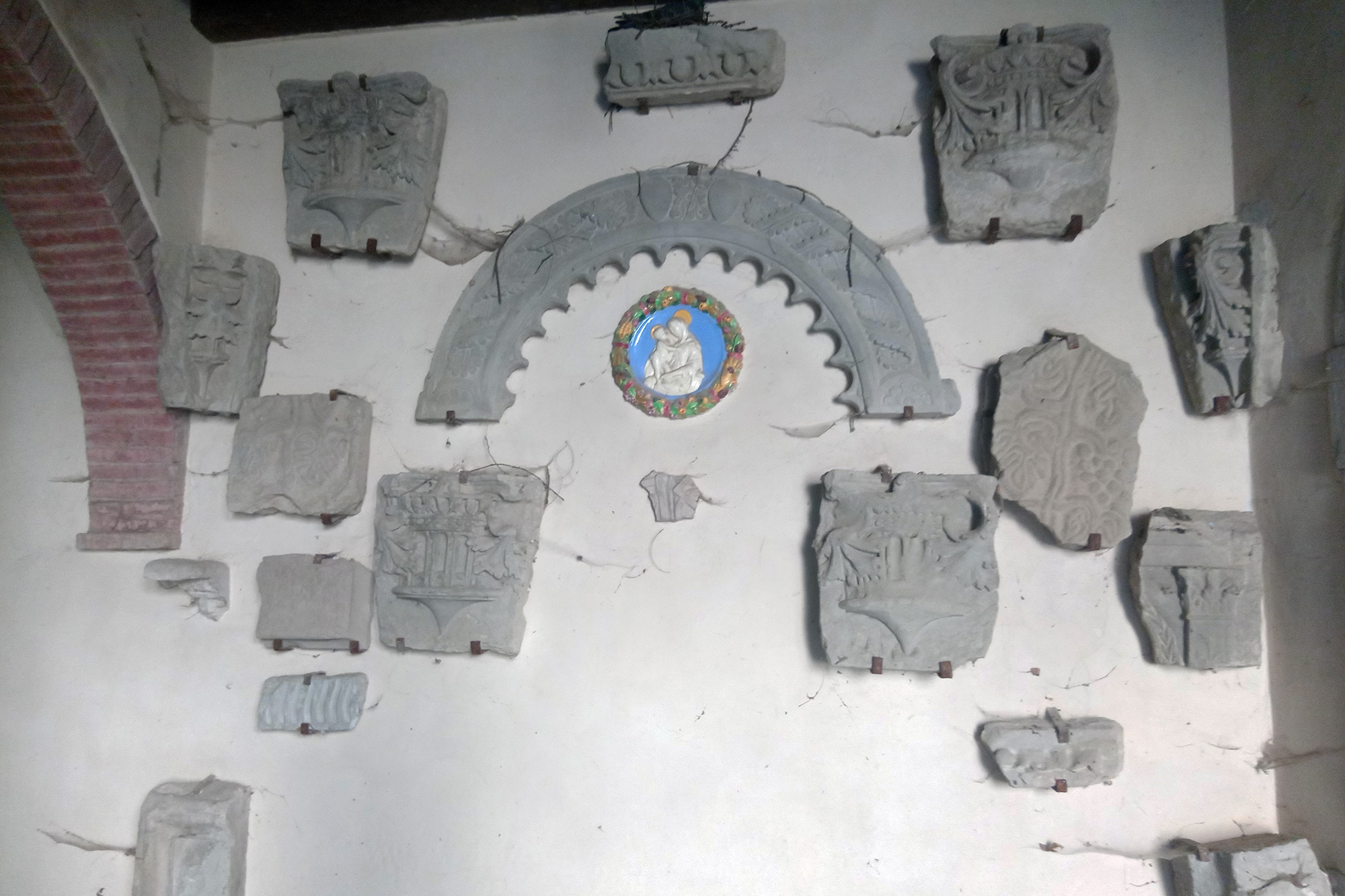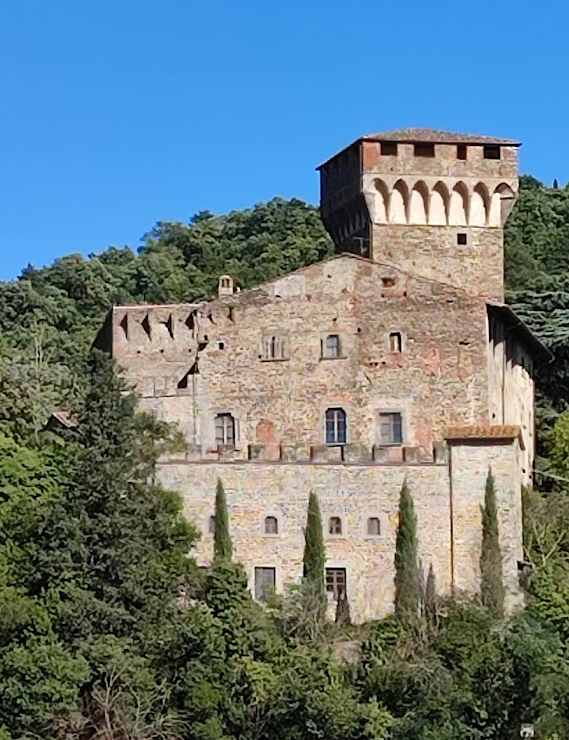











How to reach
Coming from Arezzo, Castelnuovo appears on the right of the SS70 Umbro-Casentinese above the village of Castelnuovo di Subbiano as sentinel of the river Arno Valley.
History
The castle, placed in a strategic position at the entrance of the ample Casentino Valley about 10 kilometers away from Arezzo, rises above the inhabited area of Castelnuovo (New Castle) di Subbiano, and it is considered the most important and meaningful testimony of a fortified installation in the area. Its name must be interpreted in relation to a preexisting construction called Castelvecchio (Old Castle).
A document of 1022 A.D. testifies to the existence of this fortified settlement, called at the time 'Vico di Sesto (sixth)' because it corresponded to the sixth military stone of the road to Arezzo, as ownership of the abbey of Saint Flora and Lucilla of Arezzo, to which it stayed in possession up to the XIII century. It seems that around the year 1200, the Aretinis destroyed the small fortress, and then the Benedictine abbot provided for its reconstruction. Since that time, the castle has been called Castelnuovo. During the communal wars, the castle was conquered by the Florentines and surrendered during the fief to the noble Della Fioraia family, which maintained it in the following centuries.
The fortification is characterized by a high and thick square tower crowned by machicoulis and surrounded by an ample rectangular reinforced enclosure. The enclosure's western side still preserves traces of the primitive medieval construction. The whole original plan has undergone numerous transformations during the years that followed. The heaviest of which happened in the 17th century, when the castle was practically transformed into the actual villa. Besides the already-named tower, also reconstructed, the element that remains largely unchanged from its medieval character is the inner court, partially renewed in neo-Gothic style. Also, the gate, called 'Porta Vecchia', is well preserved is well preserved and the coat of arms of the noble families of the area can still be seen in the walls on its sides.
More info & notes
Photos by Massimiliano Madiai